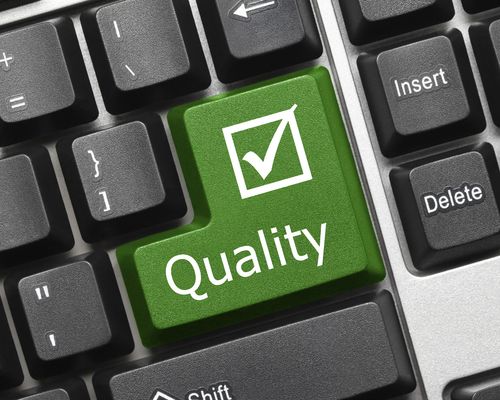20 years of ITEA impact - bound by enablers: people and innovations
Double interview with Franz-Josef Stewing of Materna and Sigrid Eldh of Ericsson
Across two decades, a common denominator is clearly evident: changes come thick and fast, but one thing remains the same – the value of the people in the achievement of impactful innovation. Like Franz-Josef Stewing, currently Vice President of R&D Coordination and Management at Materna Innovation Centre in Germany, who some 20 years ago, when he was at Siemens, began his involvement in the ITEA Community. Right at the birth of ITEA. Or Sigrid Eldh, a researcher and senior specialist in test technologies at Ericsson, a relatively fresh face to ITEA who joined the ATAC project a few years ago and now leads the 34-partner large TESTOMAT project that began in October 2017 and is due to end in September 2020.
Democratic
To start at the beginning, Franz-Josef recalls the first high-level meeting in 1998 in which committees were formed and plans were made that would lead to the ITEA Cluster. "And it was my boss at Siemens," Franz-Josef says, "that made sure I was present at all of these meetings, representing him, and I was also on the technical core team that drafted the ITEA Rainbow Book, which outlined the research areas for the new Cluster. So, I guess you can call me a real ITEA veteran. It was all a very democratic process. Can you imagine you have some 50 to 60 voices in the same room together with Peter Dekker, the first ITEA Office Director, and all keen to have a say on what should go in to a specific chapter? Mind you, there were all very positive voices and everyone was committed to the same goal of delivering a result."
All pulling together
It was during this initial period that Franz-Josef began not only to extend his professional network though the many contacts with the people involved in building ITEA but also to develop friendships, such as that with Ger van den Broek of Philips Research, that would last through till this day. "We suggested to Jan Lohstroh the idea of PO Days where people could come up with ideas and proposals for projects and in so doing find partners to form consortia. And if you look at the format today, little has changed. So it shows how valuable this early work was. And in these early days, too, ITEA decided to produce a roadmap for software-intensive engineering. This process took two to three years and was a bottom-up approach to gather ideas to gain a perspective of the future needs in the field of software-intensive systems. The outcome was the Softec project, a software technology atlas, aimed at creating a roadmap to tackle the new challenges in time-to-market and cost of reliable development by producing a new generation of software engineering tools and middleware to meet these challenges. Again, this followed a similarly democratic process with groups, or families, focusing on particular aspects. All driven by an engine of commitment to delivering results, all pulling together in a common pursuit."
Family and friends
The impact of this ITEA spirit clearly resonates with Franz-Josef. "The family spirit is very strong and I have found a lot of friends within the ITEA Community. Too many to be able to name a few. And, of course in the projects in which I have been involved as both a member and as a leader, I have made even more friends. Take the BaaS project, for example, I met people like Christoph Niedermeier and Özer Aydemir. And among my 'family' I would also include people from the public authority domain, such as Wilbert Schaap whom I have known now for as long as ITEA has been around, or Holger Stegemann, who came in about 10 years later, just halfway along the ITEA journey so far. This is important, because the public authorities really got involved in the ITEA research programme as our partners, so it was not just the nuclear family but the extended family that contributes to the impact of the results on both our economy and our society through jointly launched and relevant project initiatives."
Award-winning projects
Franz-Josef Stewing has become both a familiar figure and a household name in the ITEA community, hardly surprising given the various awards his projects have picked up. Like the first Achievement Award for the road mapping project (Softec) and, of course, the star of the show, BaaS, whose awards include Best Project at ITEA events, and which provides a blueprint for stakeholders in future building automation (eco)systems and promising exploitation options. It is also one of the ITEA Impact Stream stories that serve to highlight the impact of ITEA projects. His current focus is the Medolution project in the Smart Health area. It aims to apply long-term monitoring and real-time decision support in smart environments that integrate professional and user-created data to generate relevant information to support patients and healthcare professionals in their decision making. "Our contribution," Franz-Josef says, "is geared to improving the quality of life of patients with an artificial heart (Left Ventricular Assist Device - LVAD) for fighting their cardiac insufficiency" He is also leading a new project I2PANEMA, in the Smart Industry area, which aims to deploy the power of IoT to improve port operations, making them more efficient and sustainable, and paving the way towards networks of smart ports.
Striking a balance
Franz-Josef has learned a lot from his ITEA experience to date. "I know much more about what it takes to sell products, about KPIs and how to transform and transfer results from one context to another. But I think it is important to be conscious of not overselling exploitation to the disadvantage of innovation. Of course, this is not always an easy balance to achieve, especially with the demand for projects to demonstrate in concrete terms their impact on our economy and society. Without innovation we cannot achieve impact. We must remember that ITEA is there for the projects and not the other way around. This ITEA mantra has proven to be successful for a good twenty years, and I believe it is essential for continued success that we stick to this mantra."
A good tip from an old hand, and one that will certainly not pass unnoticed by Ericsson's Sigrid Eldh, a somewhat more recent addition to the 'family', as she embarks on her ITEA project leadership career, which began with a certain degree of scepticism.
Eyes wide open
"I must admit that when I first joined the ATAC project I had not actually been aware of ITEA, and it was the university partner that persuaded me to join as a rather small contributing partner in this consortium with Barco, Bombardier and others. My management here at Ericsson was also a little bit wary, so all I could do was to commit myself to the project as a person. So, low-key, I went in, eyes wide open, wondering what this might bring. But the experience was so positive I just had to engage more."
Broadening horizons
The next step took Sigrid into a new project, TESTOMAT Project, this time as project leader. "ATAC was a very good training ground for me," she explains. "I learned the ropes and I observed a lot of things. This is what I would do as a project leader, this is what I wouldn't do. I was a rather seasoned project leader coming into ATAC, so I thought a lot about the various aspects of the project. It was a great experience, learning what it takes and what it means being a partner in a project like this. As the time went by, it really grew on us, with more and more people from Ericsson becoming involved. We saw how we were broadening our horizons and our perspectives – both industrially and culturally. And, of course, it enabled us to develop stuff, like aspects of automation that we didn't have."
Powerful people
Sigrid had been surprised at the level of industrial involvement. "What I saw among the ITEA people were powerful people from industry – from Siemens, Bosch, Philips and other European giants. They were in the ITEA review team and I had the chance to convince them why testing was so important. I felt that this had been a bit of a non-subject before and I believe I made them aware that every industry, every software, is dependent on testing. For me that was a key message. It gave me the feeling that I had succeeded in getting my message through … to people in power!"
TESTOMAT Project
This provided a springboard for Sigrid to step in as a leader for the TESTOMAT project. Sigrid explains: "As a female in the world of innovation, it is essential to step up and become that role model. So, if you get the chance, step up! Secondly, I really wanted to acquire a much broader European network, one that went beyond my specific field, and that's what I felt ITEA can provide through running a project like this. And finally, instead of taking a back seat and commenting about this and that, I wanted to take the initiative to set the agenda for what I felt had to be done. Lo and behold, 34 partners signed up! I guess it could even have been 80 if the network I referred to had been larger, because this is an issue that affects everyone who does software. In that respect, it really is a key project in the digitalisation transition."
Good people
The complexity of such large numbers – isn't that difficult to manage? "By being agile and splitting the project into seven work packages or twenty-six mini projects or tasks as we call them, it's amazing how much energy is generated. Everyone is committed to achieving objectives and actually this makes the management a pleasure rather than a chore. It's only one year in and we've already seen some great results being achieved. In the end we will have at least two comprehensive books based on the results, or many booklets, as we call them. The trick to managing all this is knowing who you are working with and, by extension, whom you want to work with next time around. Those that succeed will definitively return to future ITEA projects. If you want a good project, get good people! The TESTOMAT Project is filled with fabulous people."
More industry presence
Outside of the ITEA project, Sigrid is very enthusiastic about the various events such as the PO Days, the workshops and conferences and feels that industry should be present in a much larger way. "But it's not easy to get the message across because too many industries are still inward-looking, preoccupied with their own issues. I think that the more local events can be arranged, the more industry can be drawn in. Like Ericsson – initially sceptical but once we gained the experience, we became very enthusiastic and more committed. I think that the word 'research' may scare people off – it can be an intimidating label for some. And, of course, we need government agencies present as much as possible. In Sweden we are fortunate to have Vinnova to champion ITEA collaborations."
Hope for the future
So, how would Sigrid sum up her first few years of the ITEA community? "I think the more you meet and interact with these people – your family – the stronger the bond becomes and the more you realise how much you have in common. There is hope for the future, when everyone is trying in one way or another to get the world moving towards a better place. This is what I really love about the community."
And so, both Franz-Josef and Sigrid, strangers as yet to each other but part of a family united in a common cause, bookend twenty years of ITEA with shared values, commitment and resolve to ensure that the ITEA Community rises to the societal and industrial challenges both now and in the future.






